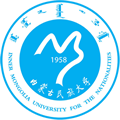Study in Inner Mongolia University for the Nationalities About Inner Mongolia University for the Nationalities & Study in imun
About Inner Mongolia University for the Nationalities
Founded in the east of Inner Mongolia Autonomous Region in 1958, Inner Mongolia University for the Nationalities (IMUN) is the only comprehensive university for the nationalities with distinct regional features and ethnic characteristics, as well as one of the key universities based on the joint effort of State Nationalities Affairs Commission and People’s Government of Inner Mongolia Autonomous Region.
IMUN enrolls both students from 28 provinces nationwide and international students from Mongolia, Russia, Pakistan, Bangladesh, India, Japan, Korea, Ghana, Zambia, Cameroon, Nigeria, Kazakhstan, Saudi Arabia, the United Arab Emirates, Poland, Belgium, etc. As the training unit of students from Mongolia for Inner Mongolia Government Scholarship since 2006, IMUN has been approved by China’s Ministry of Education in 2013 as the unit entitled to enroll international students for China Government Scholarship. Now IMUN has also been rated as the Chinese training base for international students approved by China’s Ministry of Education.
IMUN is located in Tongliao City known as “the Pearl on the Grassland”. Tongliao has a convenient and integrated public transport system with 6 railways and 8 highways connecting Jilin Province in the east, Liaoning Province in the south and Mongolia in the north. The non-stop flights can reach such metropolises as Beijing, Shanghai, Guangzhou, Chongqing, Kunming, Changchun, Harbin, Dalian, Jinan, Zhengzhou, Tianjin, Haikou, Xi’an, Hangzhou, Hohhot, Hailar, Erdos and so on.
IMUN covers a total area of 2,366,000 square meters, with the building area of 410,000 square meters. There are 1,769 workers and staff members in the university. Among 1,059 full-time teachers, there are 794 teachers with Master’s or Doctor’s degree, 633 professors and associate professors, 139 supervisors of postgraduates, 26 teachers appraised as Level 1 or Level 2 talents of “321 Talent Project” of the Autonomous Region, 32 teachers conferred the title of Experts with Outstanding Contributions or granted Special Allowance of Chinese State Council. The university now has 20,507 full-time undergraduates and junior college graduates, 746 postgraduates, 336 international students and 21,176 registered adult students. Now IMUN offers 65 bachelor’s degree programs, 11 first-level disciplines for master’s degree, 68 master’s programs under the second-level disciplines, 4 professional degree programs at master’s level, 1 doctoral program of Mongolian Pharmacy, and 7 specialties of vocational and technical education, which covers 10 areas: Law, Education, Arts, History, Science, Engineering, Agriculture, Medicine, Management and Economy.
There are 25 colleges, 2 departments, 8 teaching auxiliary units, 18 school-level research institutes, 2 affiliated hospitals, and 77 laboratories. The network centre of IMUN has access to the Internet and Chinese Education and Research Net (CERNET). The library of IMUN is one of the largest literature and information centers in the east of the autonomous region and has a Grade-2 information retrieval system of Chinese academic periodicals. In addition to a collection of 1,590,000 books and 3,000 kinds of Chinese and foreign journals, the library also has disk and network databases and a large electronic reading room.
IMUN has a large-scale museum equipped with an exhibition room of the school history, an exhibition room of Horqin culture and history, an exhibition room of Mongolian medicine specimens and an exhibition room of Tongliao minority education. The university also has a multi-functional music hall, ball game’s halls and the sports center which are all equipped with a complete set of facilities for sports and recreational activities.
IMUN has not only expanded cooperation with 10 domestic universities, but established a closer relationship with 23 universities from Asia, Europe and North America. So far, IMUN has sent abroad more than 400 students and visiting scholars to promote exchange programs or joint research programs.

